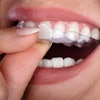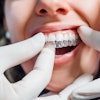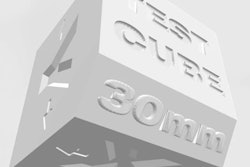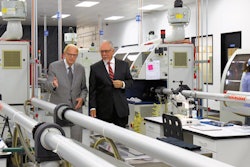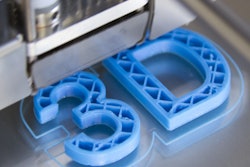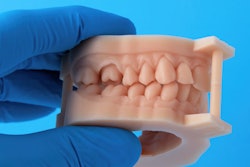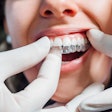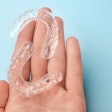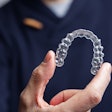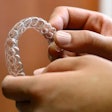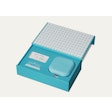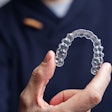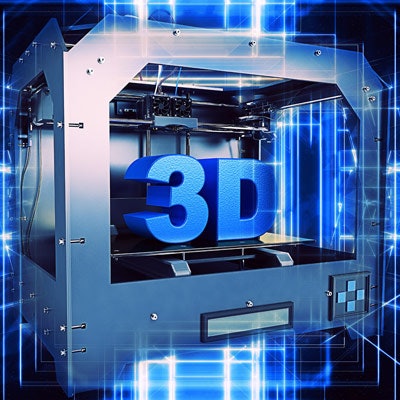
The dental industry is undergoing a digital revolution. With technology improving and costs dropping, many dental professionals are eyeing a switch to digital workflows. For digital dentistry to mature and gain majority adoption, the complete system and workflow must be accessible and easy to use.
Even though the dental industry has been rapidly digitizing over the past 10 years, it is still very early days for digital dentistry, and the technology will continue to change rapidly over the next decade. But one key piece of technology needed to unlock the full potential of digital dentistry is still lagging in adoption rates: 3D printing.
 Sam Wainwright.
Sam Wainwright.A major barrier to 3D printing technology's introduction into digital dentistry is the CAD software. Dental professionals should be able to easily take an intraoral scan, load it into the computer, and quickly turn it into a 3D printable design. Unfortunately, that is not the case without high cost.
Technicians who digitally design models, prosthetics, and appliances from a digital impression currently need to be well-versed in complex dental CAD software, use open-source mesh editors not designed for the needs of dental professionals, or outsource design to a dental lab or design center. Software and equipment manufacturers must find a way to improve the CAD process and make the interface more user-friendly and intuitive.
Digital dentistry, empowered by CAD technology, is the most efficient and best way to treat patients. To enable a shift to digital workflows, there must be a concerted effort to make technology like 3D printing more approachable and easier to use, so dental professionals and their patients can reap the benefits
Challenges dentists face with 3D printing
By bringing some production in-house, 3D printing can reduce turnaround time for treatments by producing models for clear aligners and retainers -- or even fully 3D-printed occlusal splints, restorations, and dentures. It also gives dental practices greater control over the process and their patient care, with a positive return on investment.
But despite the advances in 3D printing to improve ease of use and offer a wider variety of resins for all types of dental printing, many practices are still slow to integrate the technology into their workflow.
Dentists and orthodontists will likely hit many roadblocks when adding 3D printing to their practice. The first and most difficult one is perception. It can be difficult for anyone unfamiliar with the technology to avoid content that oversimplifies the workflow or to make sense of the many different 3D printers on the market. It sets the person down the path of learning about each individual 3D printer and its technology, which is a valuable but daunting task.
In reality, you should take a step back and break the process down into its major components: 3D intraoral scanner, digital impression file(s), CAD software, manufacturing file(s), print preparation software, 3D printing (build platform, resin, and tank), isopropyl alcohol washing, drying, ultraviolet (UV) curing, any other steps and tools required in making an appliance, and quality control.
The 3D printer is a big part of the process, but it's far from the only consideration. Often, the dentist or orthodontist gets ready to make a buying decision only to discover during a sales conversation (or, worse, after making a purchase) that he or she needs different or additional equipment.
Dental CAD is a huge component of 3D printing, and there are layers of complexity to understand. For example, a practice may already have dental CAD software for grinding crowns chairside, but not the controls or functionality needed to export STL files for 3D printing models.
Dental 3D printing is fun and exciting, and it is so easy to get completely on board with the idea and have the highest expectations possible. But once you start peeling back the onion, it can feel like too much, disenfranchising the idea altogether.
Here are some recommendations for approaching 3D printing:
- Start by understanding the complete workflow and steps of the process. Don't get bogged down by the technical specifications of the 3D printer.
- Have a primary application in mind. While it's important to know the 3D printer can do everything you'd like, stay focused on keeping it simple.
- Start with easier applications or uses first. For example, 3D printing diagnostic models is the easiest application, while handling full dentures is much more difficult.
- Find a 3D printing manufacturer that checks as many boxes in the workflow as possible. It will reduce variables.
- Look for a reseller or manufacturer that provides good education and support specific to the dental industry.
Well-designed workflow in practice
Dr. Scott Helle, a dentist based in Natick, MA, sought a way to provide his patients with the best experience and care without adding extra time, cost, or burden to his team's already busy schedule. Helle considered the hardware and software challenges of the 3D printing process in looking for a solution, and he eventually turned to Formlabs Dental to manufacture models and retainers.
Helle's whole workflow takes about an hour from start to finish, drastically reducing the amount of time previously spent using more complicated CAD systems. The simplified workflow helps Helle save time and money: His patients get the retainers and models they need sooner, and it eliminates the training and labor requirements needed to get his team comfortable with the new technology.
With a specialized focus on the needs of dental professionals, 3D printing can set digital dentistry on a fast track to adoption. Advancements such as Scan to Model are some of the steps needed to make these tools easy to use and for dental professionals to simplify a critical workflow.
With the ability to 3D print dental replica models from a digital impression and a 3D intraoral scanner with no other secondary software or hardware, dental professionals can go digital without adding more time and labor to the process.
Sam Wainwright, a dental product manager at Formlabs, has been in the dental industry for more than 10 years, helping labs and dentists increase efficiency with new technology. Formlabs is expanding access to digital fabrication so that anyone can make anything. Formlabs Dental is made up of a team of dental professionals dedicated to providing the best 3D printing solutions in the industry.
The comments and observations expressed herein do not necessarily reflect the opinions of DrBicuspid.com, nor should they be construed as an endorsement or admonishment of any particular idea, vendor, or organization.
